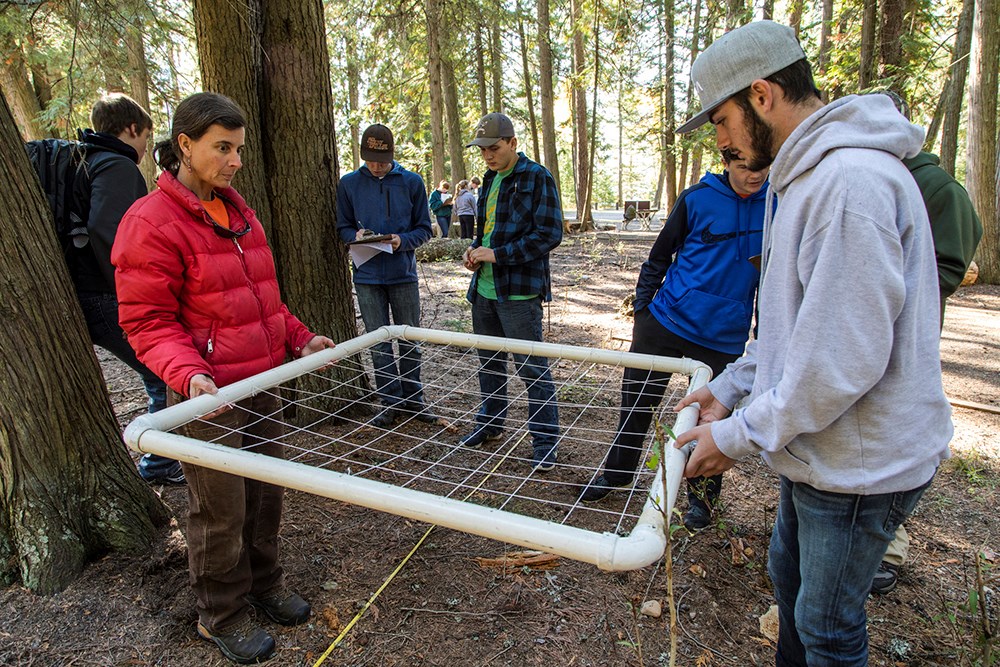
NPS/Jacob W. Frank Students will become "Citizen Scientists" and hike less than 2 miles to permanently established research plots to collect data on the percent cover of native and non-native, invasive plants. Students will return to school and add their data to the information from previous visits of other schools. They will analyze and look for patterns as the database builds each year. Glacier is at the core of the "Crown of the Continent" ecosystem, one of the most ecologically intact areas remaining in the temperate regions of the world. The establishment of Glacier National Park, along with its geographic location, has enabled its ecological processes and biological diversity to survive relatively intact in a rapidly changing and encroaching world. Glacier is one of the few places in the contiguous 48 states that continue to support natural populations of all indigenous carnivores and most of their prey. Glacier provides an outstanding opportunity for ecological management and research in one of the largest areas where natural processes predominate. As a result, the park has been designated a Biosphere Reserve, and Waterton-Glacier International Peace Park has been designated as a World Heritage site. Grades: 6–12
National and State Standards:
Next Generation Science Standards ObjectivesStudents will be able to:
Field Trip LogisticsTeachers wishing to have thier students participate in the "Plant Invaders" field trip should plan to arrive at Apgar by 10:00 am. and stay until 1:30 pm. Everyone in the group must be prepared to be outside for the entire program and be able to hike up to 4 miles over varied terrain. Reserve Your TripVisit the Scheduling & Guidelines page to find the reservation form as well as tips for a successful day in the park. If you have questions, email or call the Education Specialist at 406-888-5837. Preparing for Your TripStudents that spend time preparing for their visit get more out of a field trip to the park. Activities post-visit also help to reinforce information learned during the trip. MUST READ! To help your students start learning about weeds, see the lesson "A Weed by Any Other Name" from the kNOweeds Curriculum, Missoula County Extension. The supplemental materials include a power point presentation. To make sure students understand the data they'll be collecting on their Glacier field trip, staff coordinating the field trip may send a preparation slide show and teacher slide notes. Suggested activities and supplementary materials:
|
Last updated: May 31, 2024
